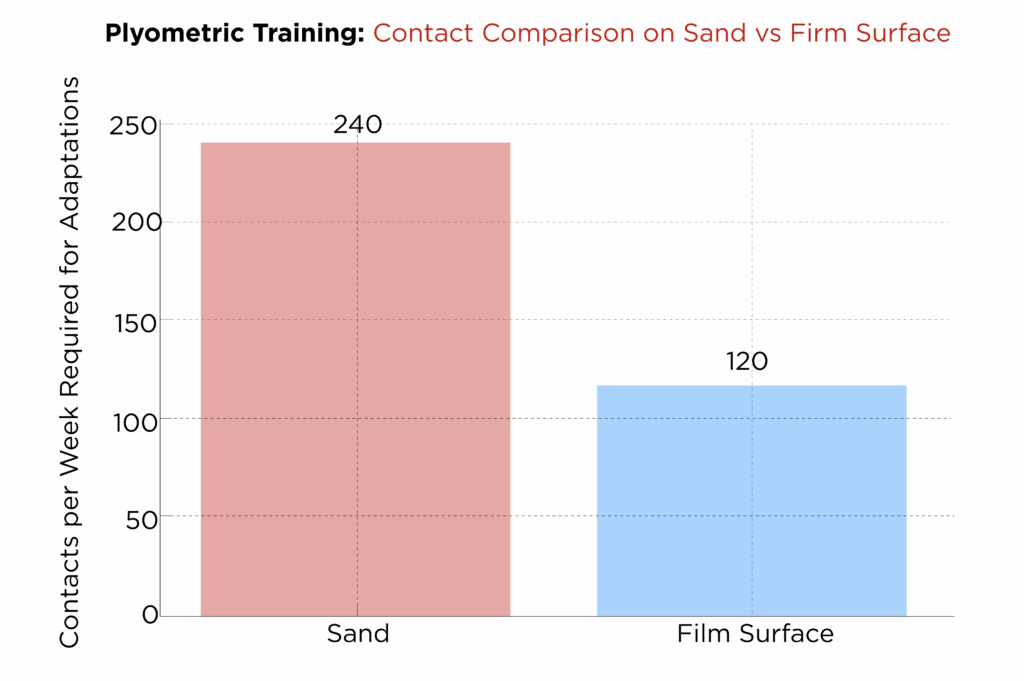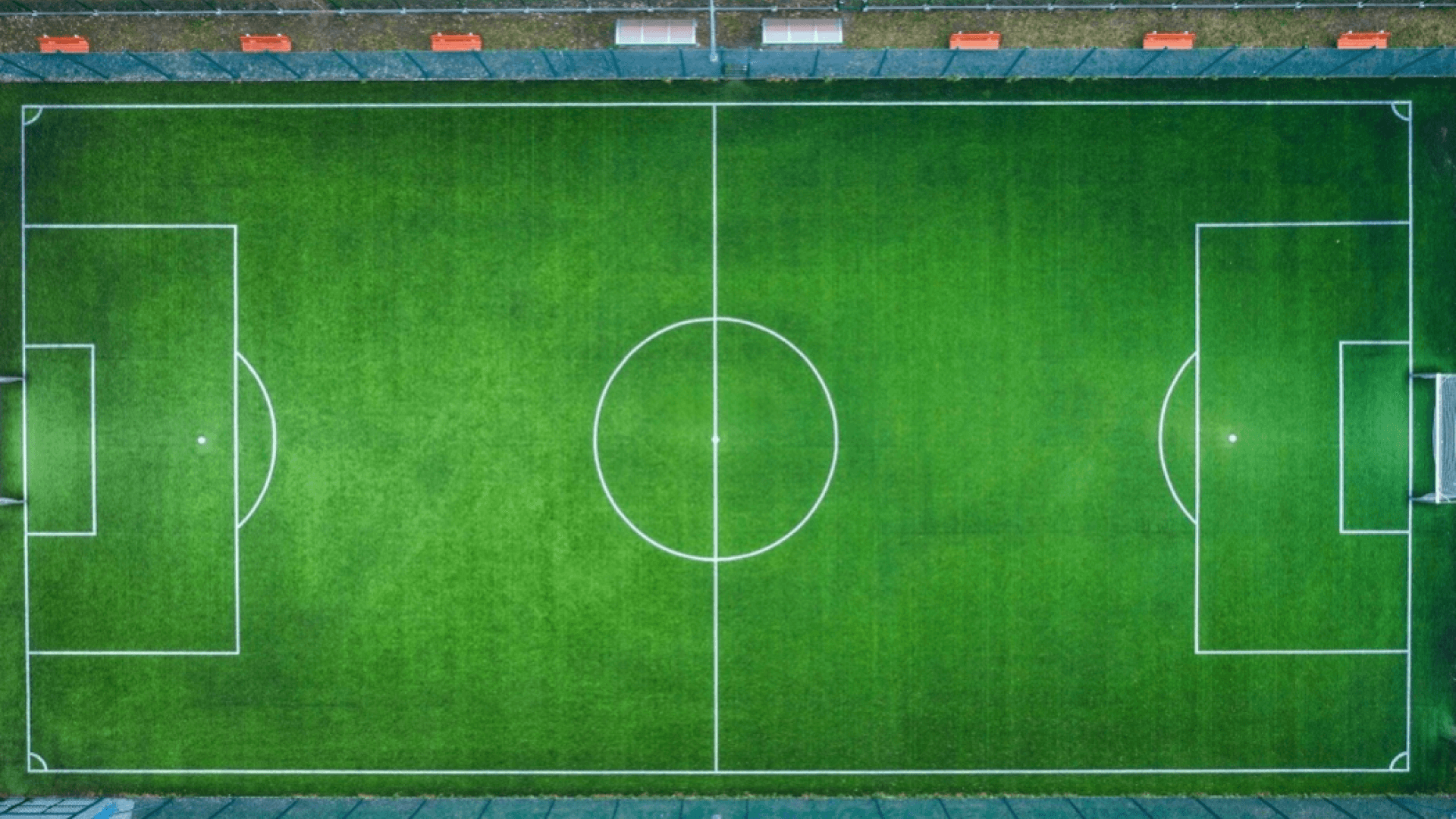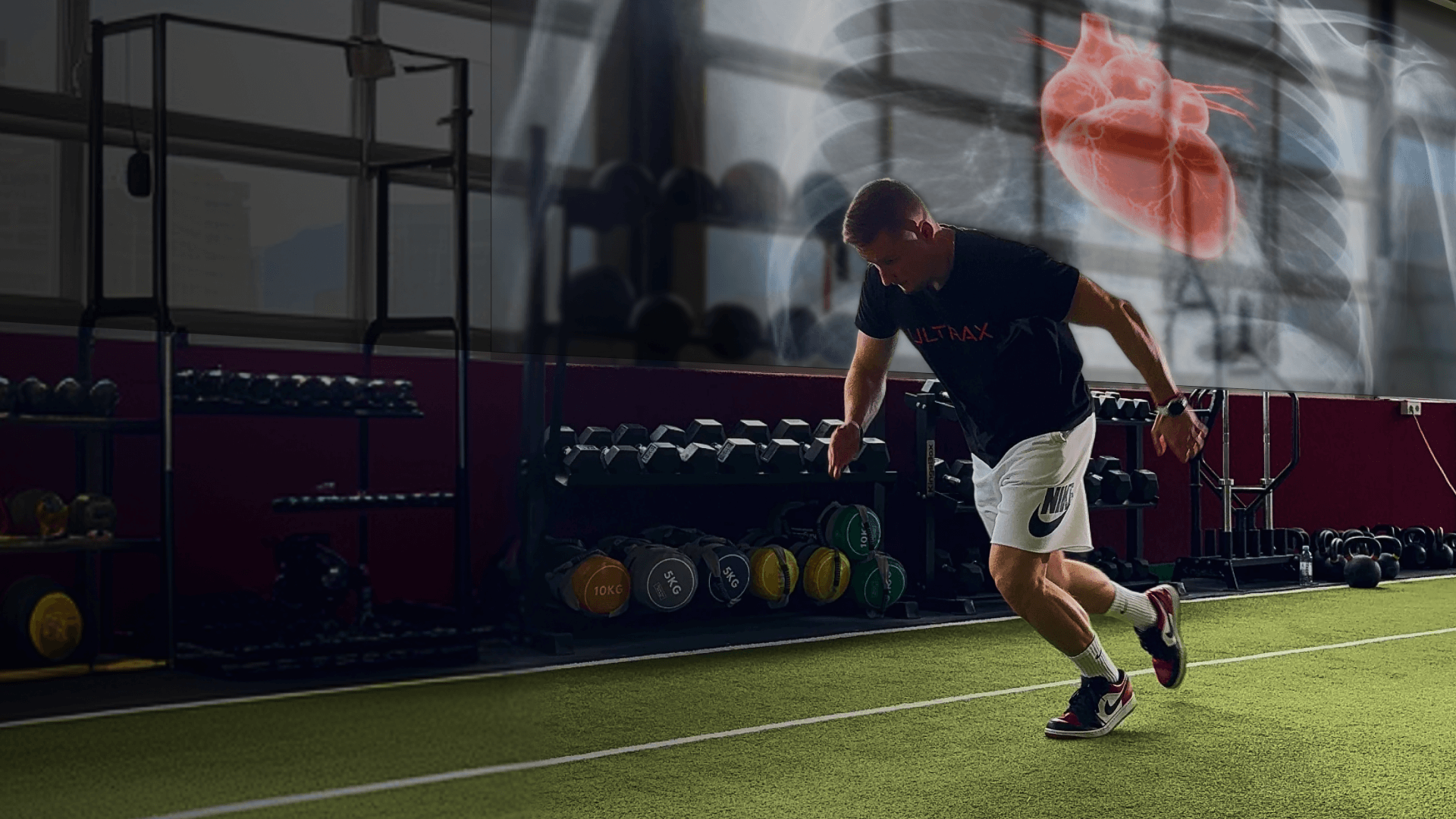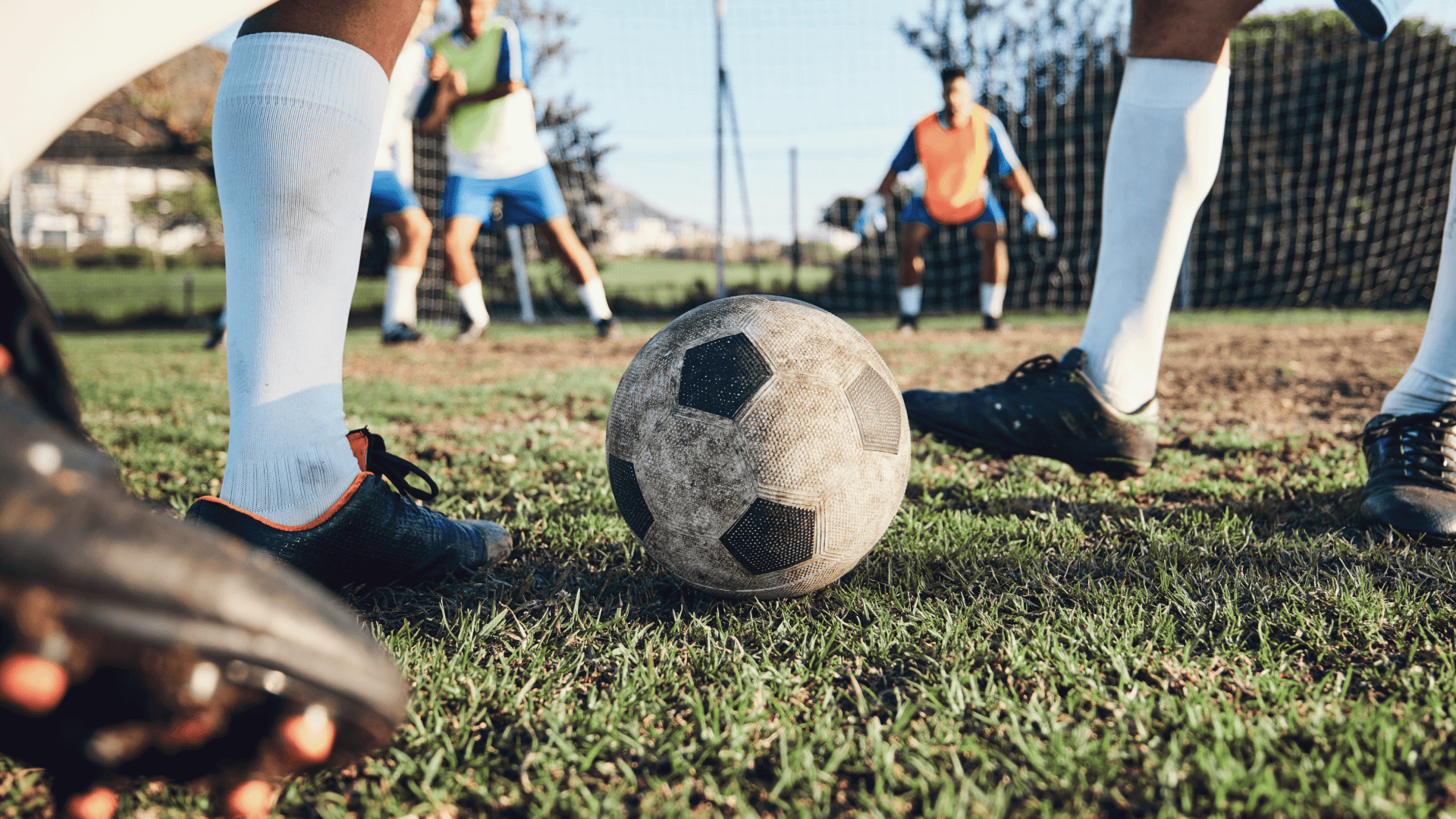Plyometric training is a method within strength training (1,2) that is beneficial due to the short time required to apply force, similar to sports actions (1,3,4). However, not all surfaces generate the same responses. In this article, we will explore how sand and water affect jump mechanics, their benefits, and which types of athletes may benefit the most from them.
Training on Sand: Higher Demand, Lower Impact
Sand is a soft surface that absorbs much of the energy generated with each contact, leading to longer ground contact time and additional effort for the muscles involved in jumping (5). This phenomenon triggers specific adaptations:
Increased muscle activation: The need to generate more force to push off the sand leads to greater activation of stabilizing muscles and the core (6)
Reduced joint impact: Sand decreases ground reaction forces, which may reduce the risk of overuse injuries (5).
Less delayed onset muscle soreness (DOMS): Studies have shown that training on sand reduces the occurrence of DOMS compared to harder surfaces (7)
Improved change of direction (COD) ability: The instability of sand forces greater neuromuscular adjustments, potentially translating into better agility and body control (5).
However, training on sand also presents some challenges:
Higher energy demand: Fatigue may occur more quickly due to the increased force required for each movement (8).
Requires greater training volume: To achieve adaptations similar to those obtained on rigid surfaces, a higher number of repetitions and contacts are needed. (9)
Practical Example:
A soccer player looking to improve agility and lower limb endurance could incorporate sand-based drills such as lateral bounds, sprint drills, and depth jumps. A recommended session could include:
3 sets of 8 lateral bounds per leg
4 sets of 10-meter sprints on sand
3 sets of 6 depth jumps from a low platform

Effectiveness Comparison:
Research (9) shows that while sand training enhances endurance and joint protection, it requires about 30-50% more repetitions to achieve similar power gains as training on rigid surfaces. Additionally, sprint times on sand are generally slower compared to firm ground, but the improvements in stability and agility can translate well to sport-specific movements.
Training in Water: More Concentric, Less Eccentric
Plyometric training in water is less common but has unique characteristics that can be beneficial in certain contexts (10):
Lower impact and joint stress: The buoyancy of water reduces joint loading, making it ideal for injury recovery or athletes with a history of joint discomfort.
High resistance in the concentric phase: The viscosity of water creates greater opposition to movement, increasing muscle activation during the push-off pase.
Can promote neuromuscular re-education: The uniform resistance of water enhances body awareness and movement control.
Challenges of training in water:
Lower transfer to sport-specific movements: Due to the lack of impact and differences in movement mechanics, the benefits of plyometric training in water may not fully translate to land-based performance.
Limited accessibility: Not all athletes have access to pools with adequate depth for effective plyometric exercises.
Practical Example:
A basketball player recovering from knee pain could use pool-based plyometrics to maintain explosive power without stressing the joints. A recommended session might include:
3 sets of 10 bounding strides across the pool
3 sets of 12 squat jumps in waist-deep water
4 sets of 8 high knee jumps
Which Surface is Best for Each Athlete?
Sand: Ideal for athletes looking to strengthen stabilizing muscles, improve change of direction ability, and reduce joint impact while maintaining explosive force application (5).
Water: Recommended for those seeking a safe plyometric training option with low impact, whether for recovery processes or to complement physical preparation during high-load periods (5).
Conclusion
Both sand and water offer unique benefits for plyometric training. While sand promotes greater strength development with lower impact, water provides a safe alternative for recovery and injury prevention. The key is to select the surface that best aligns with the athlete’s goals and combine strategies to maximize benefits.
References:
1-Ramírez-delaCruz M, Bravo-Sánchez A, Esteban-García P, Jiménez F, Abián-Vicén J. Effects of Plyometric Training on Lower Body Muscle Architecture, Tendon Structure, Stiffness and Physical Performance: A Systematic Review and Meta-analysis. Sports Med Open. 2022;8(1):40.
2- Loturco I, Freitas TT, Zabaloy S, et al. Speed Training Practices of Brazilian Olympic Sprint and Jump Coaches: Toward a Deeper Understanding of Their Choices and Insights (Part II). J Hum Kinet. 2023;89:187-211.
3-Cormier P, Freitas TT, Rubio-Arias J, Alcaraz PE. Complex and Contrast Training: Does Strength and Power Training Sequence Affect Performance Based Adaptations in Team Sports? A Systematic Review and Metaanalysis. J Strength Cond Res. 2020;34(5):1461-1479.
4-Thapa RK, Lum D, Moran J, Ramirez-Campillo R. Effects of Complex Training on Sprint, Jump, and Change of Direction Ability of Soccer Players: A Systematic Review and Meta-Analysis. Front Psychol. 2020;11:627869.
5-Sanchez-Ottado GR, Spyrou K, Pereira LA, Alcaraz PE, Zabaloy S, Loturco I, et al. Effects of plyometric training performed on different surfaces and with different types of footwear on the neuromuscular performance of team-sport athletes: A systematic review. Biol Sport. 2025.
6-Zamparo P, Perini R, Orizio C, Sacher M, Ferretti G. The energy cost of walking or running on sand. Eur J Appl Physiol Occup Physiol. 1992;65(2):183-187.
7-Impellizzeri FM, Rampinini E, Castagna C, Martino F, Fiorini S, Wisloff U. Effect of plyometric training on sand versus grass on muscle soreness and jumping and sprinting ability in soccer players. Br J Sports Med. 2008;42(1):42-46.
8-Bishop D. A comparison between land and sand-based tests for beach volleyball assessment. J Sports Med Phys Fitness. 2003;43(4):418-423.
9-Ramírez-Campillo R, Andrade DC, Izquierdo M. Effects of plyometric training volume and training surface on explosive strength. J Strength Cond Res. 2013;27(10):2714-2722.
10-Martel GF, Harmer ML, Logan JM, Parker CB. Aquatic plyometric training increases vertical jump in female volleyball players. Med Sci Sports Exerc. 2005;37(10):1814-1819.



